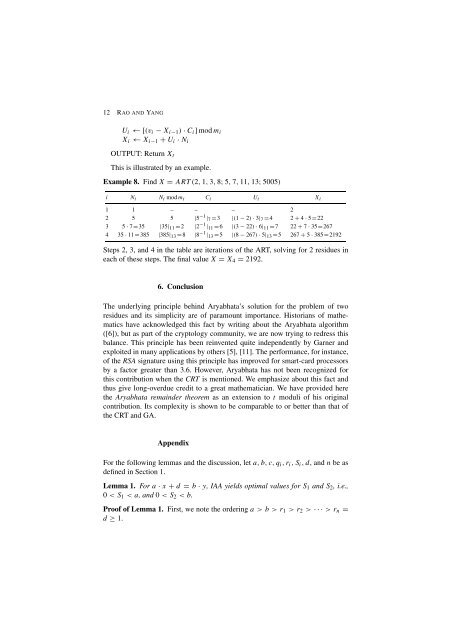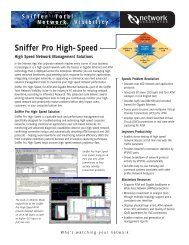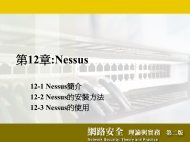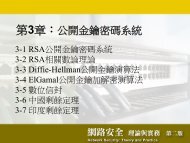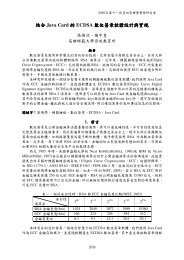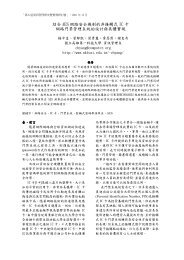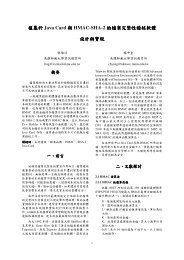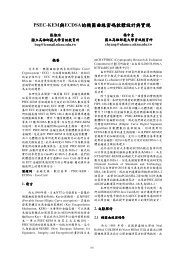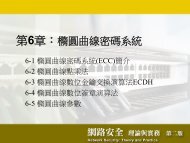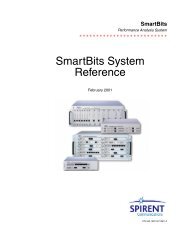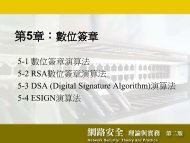aryabhata remainder theorem: relevance to public-key crypto ...
aryabhata remainder theorem: relevance to public-key crypto ...
aryabhata remainder theorem: relevance to public-key crypto ...
You also want an ePaper? Increase the reach of your titles
YUMPU automatically turns print PDFs into web optimized ePapers that Google loves.
12 RAO AND YANG<br />
Ui ←[(vi − Xi−1) · Ci] mod mi<br />
Xi ← Xi−1 + Ui · Ni<br />
OUTPUT: Return Xt<br />
This is illustrated by an example.<br />
Example 8. Find X = ART(2, 1, 3, 8; 5, 7, 11, 13; 5005)<br />
i Ni Ni mod mi Ci Ui Xi<br />
1 1 – – – 2<br />
2 5 5 |5 −1 |7 =3 |(1 − 2) · 3|7 =4 2+ 4 · 5=22<br />
3 5· 7=35 |35|11 =2 |2 −1 |11 =6 |(3 − 22) · 6|11 =7 22+ 7 · 35=267<br />
4 35· 11=385 |385|13 =8 |8 −1 |13 =5 |(8 − 267) · 5|13 =5 267 + 5 · 385=2192<br />
Steps 2, 3, and 4 in the table are iterations of the ART, solving for 2 residues in<br />
each of these steps. The final value X = X4 = 2192.<br />
6. Conclusion<br />
The underlying principle behind Aryabhata’s solution for the problem of two<br />
residues and its simplicity are of paramount importance. His<strong>to</strong>rians of mathematics<br />
have acknowledged this fact by writing about the Aryabhata algorithm<br />
([6]), but as part of the cryp<strong>to</strong>logy community, we are now trying <strong>to</strong> redress this<br />
balance. This principle has been reinvented quite independently by Garner and<br />
exploited in many applications by others [5], [11]. The performance, for instance,<br />
of the RSA signature using this principle has improved for smart-card processors<br />
by a fac<strong>to</strong>r greater than 3.6. However, Aryabhata has not been recognized for<br />
this contribution when the CRT is mentioned. We emphasize about this fact and<br />
thus give long-overdue credit <strong>to</strong> a great mathematician. We have provided here<br />
the Aryabhata <strong>remainder</strong> <strong>theorem</strong> as an extension <strong>to</strong> t moduli of his original<br />
contribution. Its complexity is shown <strong>to</strong> be comparable <strong>to</strong> or better than that of<br />
the CRT and GA.<br />
Appendix<br />
For the following lemmas and the discussion, let a, b, c, qi, ri, Si, d, and n be as<br />
defined in Section 1.<br />
Lemma 1. For a · x + d = b · y, IAA yields optimal values for S1 and S2, i.e.,<br />
0 < S1 < a, and 0 < S2 < b.<br />
Proof of Lemma 1. First, we note the ordering a > b > r1 > r2 > ··· > rn =<br />
d ≥ 1.


